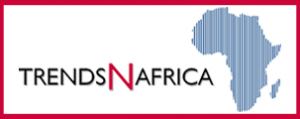
(3 Minutes Read)
World Bank President Ajay Banga emphasised the essential role of electrification in unlocking Africa’s demographic potential, unveiling an ambitious USD 85 billion initiative aimed at providing electricity to 300 million people by 2030. Named ‘Mission 300’, this program is led by the World Bank in partnership with the International Monetary Fund (IMF), the African Development Bank (AfDB), and private investors.
With nearly half of sub-Saharan Africa’s population—around 570 million people—without electricity, Banga noted that this lack hinders education, employment, and productivity. At the Mission 300 Africa Energy Summit in Dar es Salaam, he stressed that without significant investment in energy infrastructure, the continent’s large youth population could face serious socio-economic challenges in the coming years.
The Mission 300 initiative adopts a results-based funding model, allowing African governments to receive grants and concessional financing in return for enacting regulatory reforms that attract private sector investment. Banga explained that this model aims to ensure accountability and long-term sustainability.
The summit showcased presentations from various African countries, including Nigeria and the Democratic Republic of Congo, detailing the substantial investment needed. It is estimated that expanding the power grid, implementing off-grid solutions like mini-grids, and increasing solar home systems will require over USD 115 billion in funding. Additionally, ten to twelve more African nations are expected to formulate their own electrification strategies within six months.
Rémy Rioux, head of the French development bank Agence Française de Développement, stated that France is eager to back Africa’s electrification goals as part of broader global development efforts. The funding for Mission 300 is anticipated to be multi-faceted, with Banga indicating that the World Bank’s International Development Association (IDA) could provide USD 30 billion to USD40 billion, the IMF might add USD 10 billion to USD 20 billion, and the AfDB could contribute USD 8 billion to USD 10 billion. Private investors are projected to invest an additional USD 10 billion to USD 15 billion, while other multilateral development banks and funds have already committed around USD 5 billion, according to AfDB President Akinwumi Adesina.
This financial commitment far surpasses previous estimates, which had suggested a total of USD 40 billion in funding, with USD 25 billion coming from the World Bank alone. Furthermore, the International Finance Corporation (IFC), the World Bank’s private sector investment arm, plans to direct funds to companies working to enhance electricity access, thereby attracting further private investment.
Read Also;
http://trendsnafrica.com/world-bank-plans-to-connect-300-million-africans-with-electricity/
Despite worries about potential changes in U.S. foreign aid policy with a new administration, Banga expressed confidence that Mission 300 would remain on track. As the largest shareholder in the World Bank, the United States has historically played a crucial role in funding global development initiatives. The electrification effort aligns with Africa’s broader economic development strategy, which aims to capitalise on the continent’s rich renewable energy resources. Access to reliable electricity is seen as a vital factor for industrialisation, digital transformation, and socio-economic progress in a youthful, rapidly growing population.
As Africa strives to establish itself as a significant global economic player, initiatives like Mission 300 could act as a driving force for sustained growth and development, providing millions with access to essential resources needed to succeed in the modern economy.









